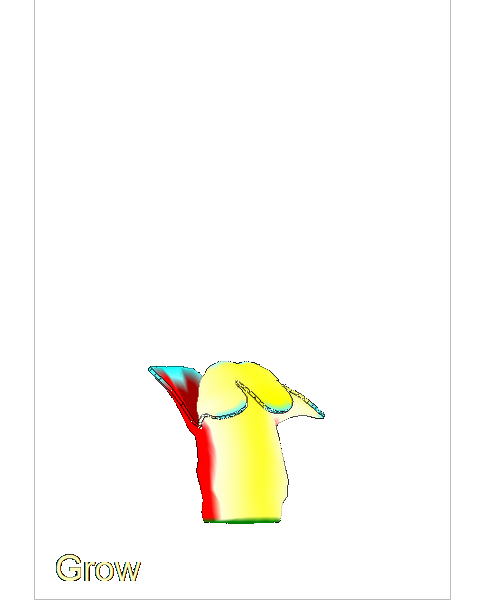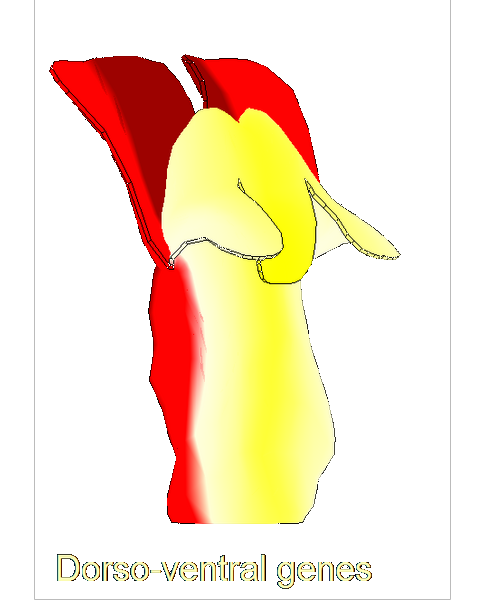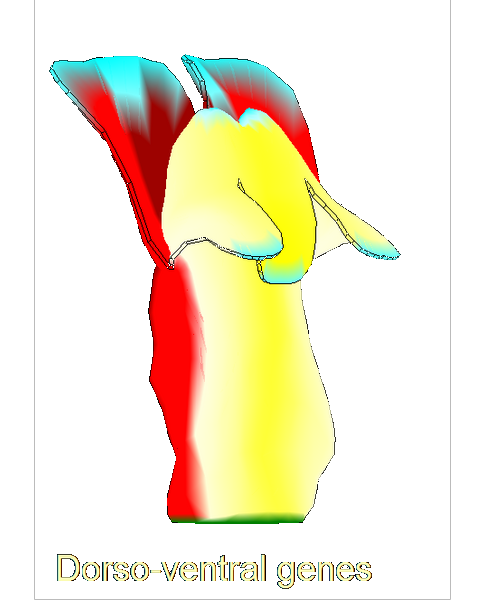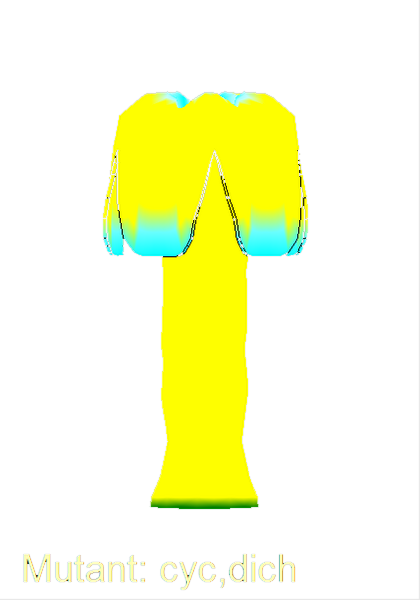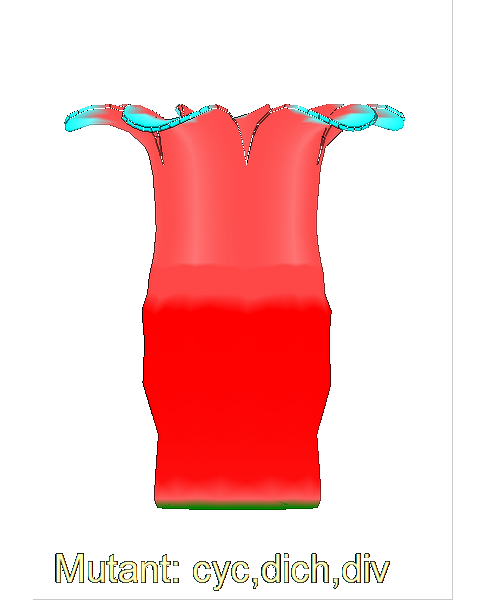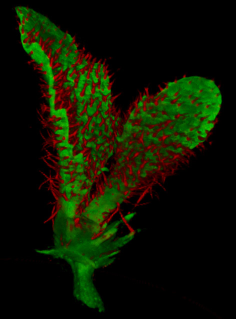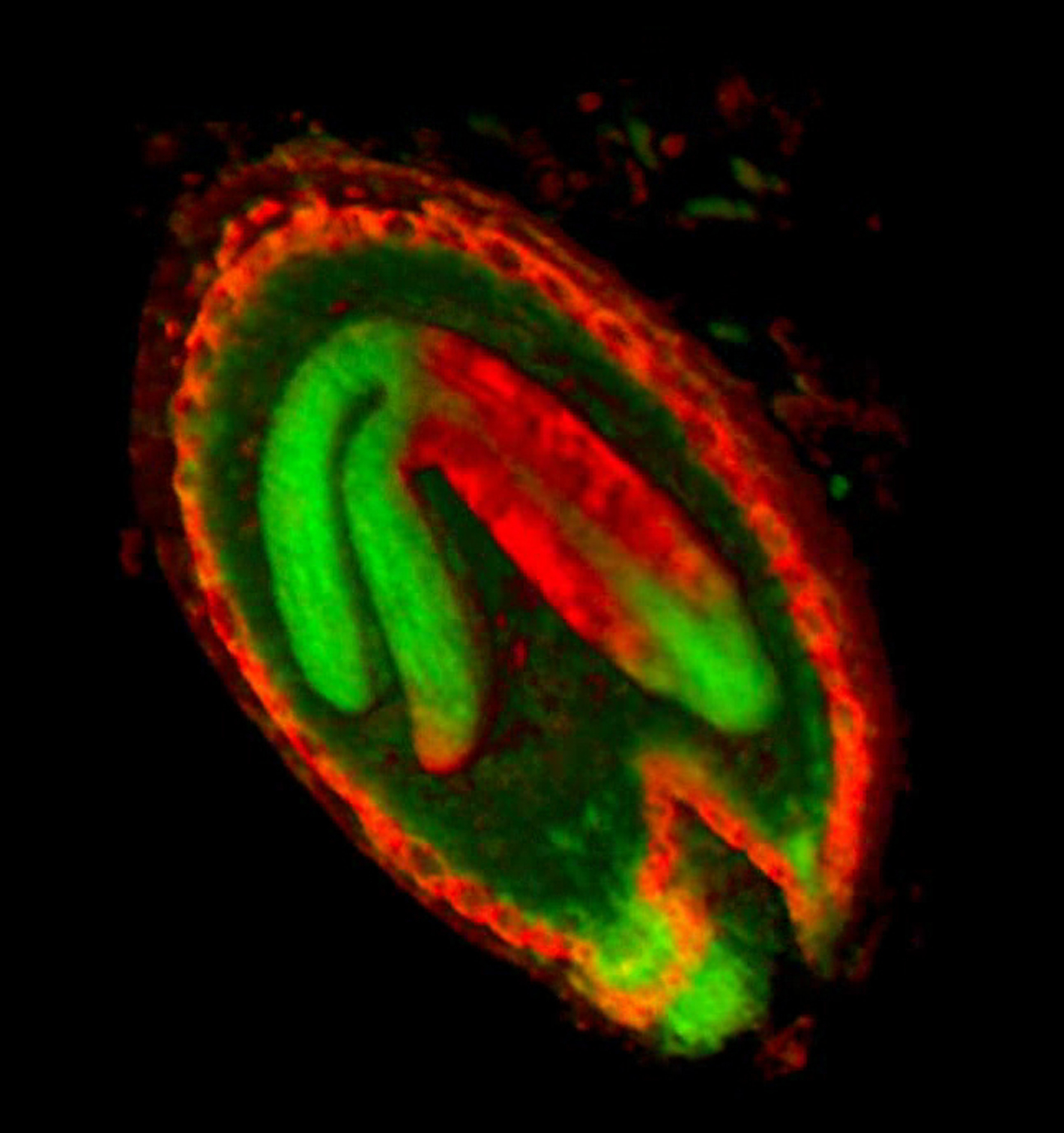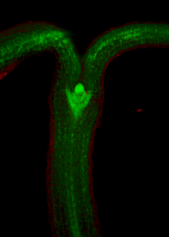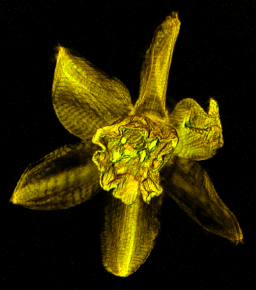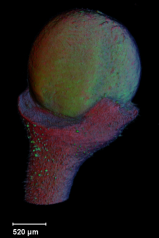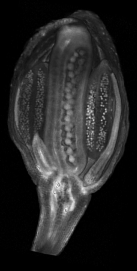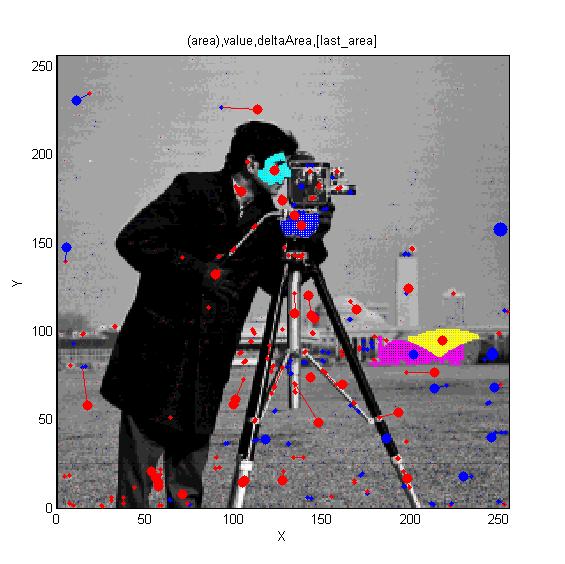Main Page
Bangham at UEA
Computational biology toolboxes
Growing complex biological shapes from patterns of gene expression
Viewing three dimensional images
Analysing shapes: faces, leaves and flowers

MORE
Seen the origional paintings? Do they exist?.
Algorithms
MSER's, extrema, Connected-set filters, Sieves and Scale-space
Reaction-diffusion and morphogenesis - the growth of shapes
MORE
In 1952 Alan Turing proposed The chemical basis of Morphogenesis - "... suggested that a system of chemical substances, called morphogens, reacting together and diffusing through a tissue, is adequate to account for the main phenomena of morphogenesis. Such a system, although it may originally be quite homogeneous, may later develop a pattern or structure due to an instability of the homogeneous equilibrium, which is triggered off by random disturbances. ..." Such patterning is now widely known. However, the morphogenesis element of the story has been less widely explored - here we illustrate the process using GFtbox - but also see: plant meristemreview related plant stuff
Two chemical substances react and diffuse to dynamically develop a pattern of spots (top row). We have added two simple growth rules (based on our hypotheses on the growth of shapes) to dynamically translate the pattern into a pattern of growth (bottom row). The changing geometry arising through growth which in turn feeds back on the reaction-diffusion system to modulate patterning. One of the morphogenesis rules uses the chemical concentration gradient to set the axes for anisotropic growth (arrows in third panel).
This model was featured in a video interview exhibit in the London Science Museum 'Codebreakers' exhibition Codebreakers.
More details on reaction-diffusion and morphogenesis

